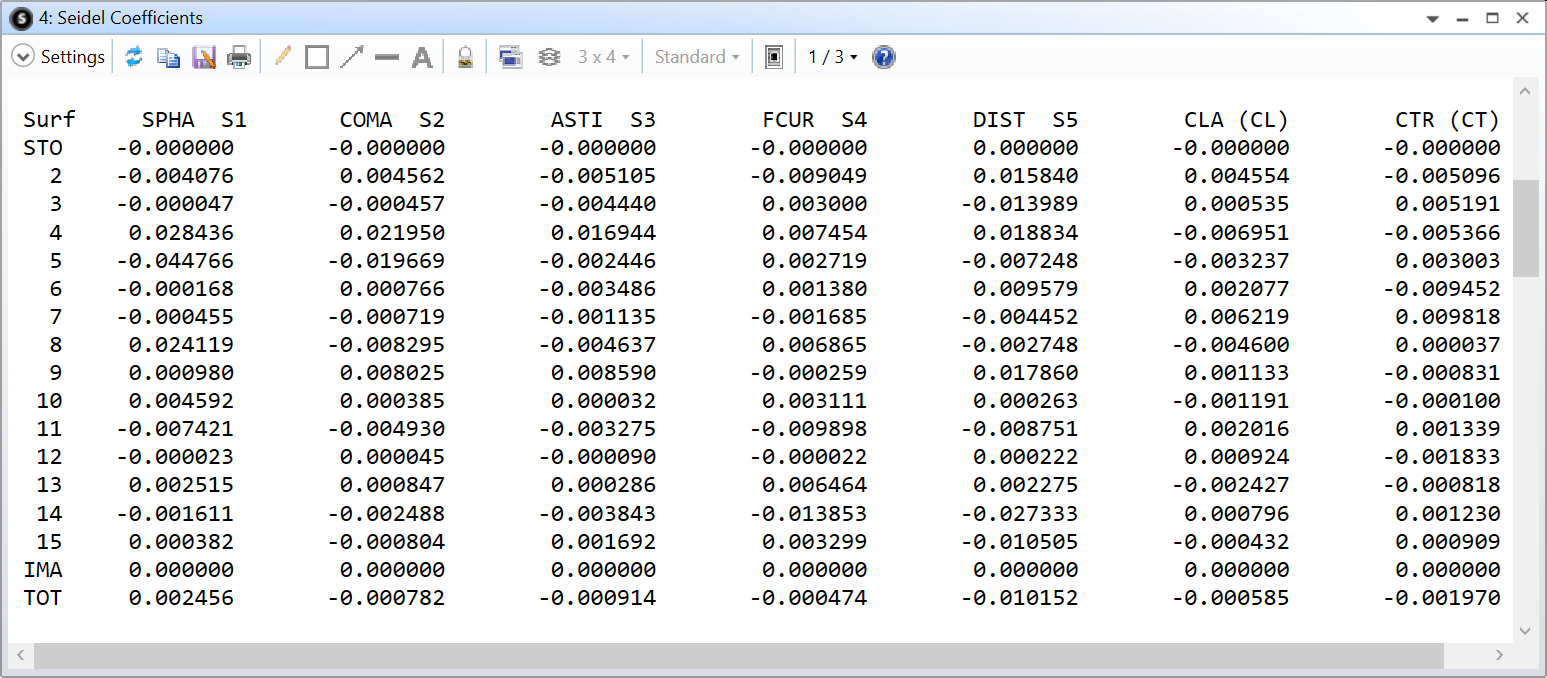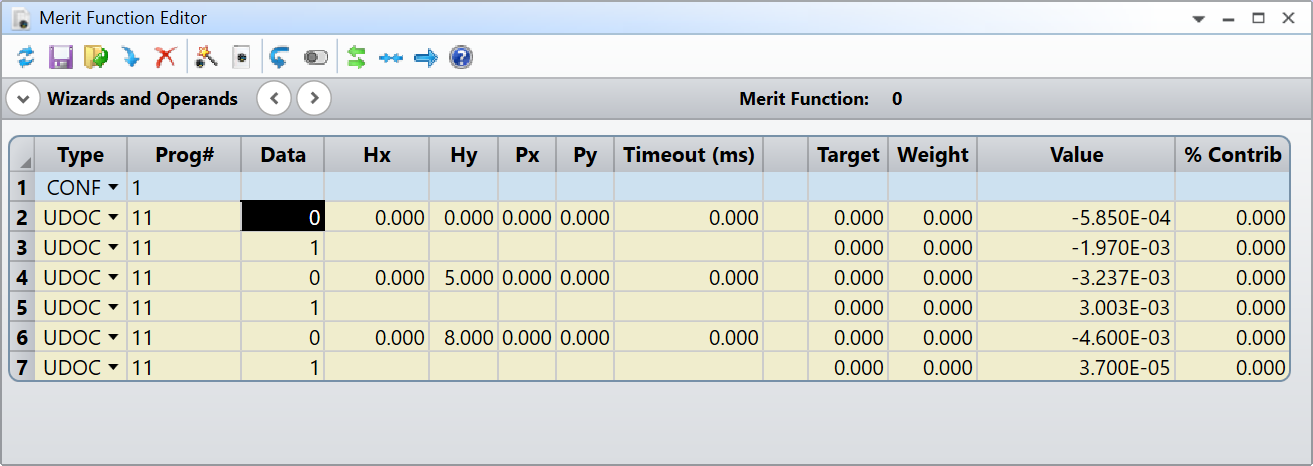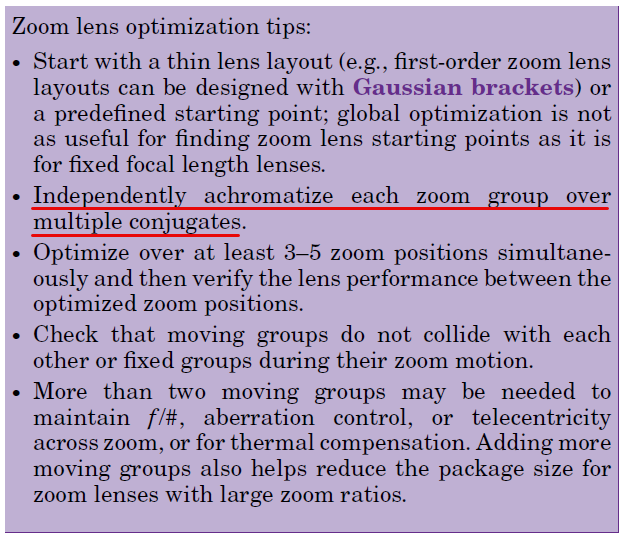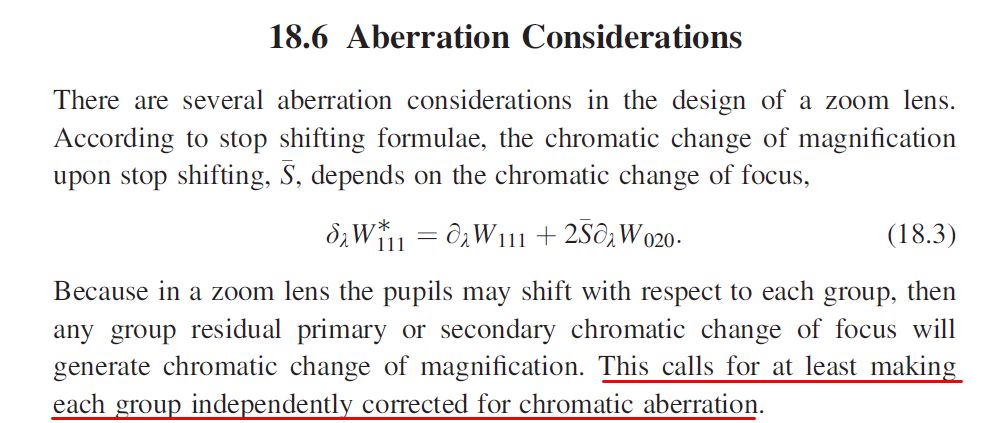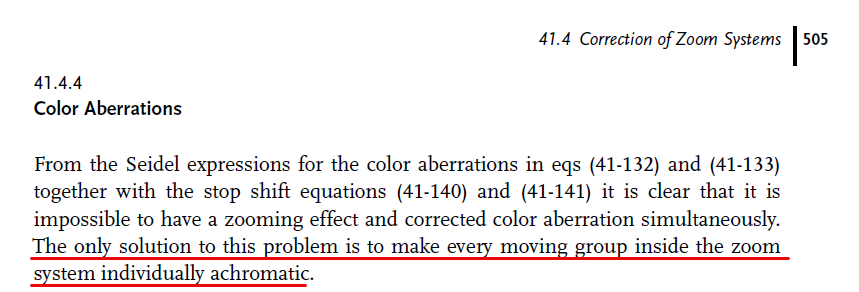ALL: Feb 27, 2024
I am trying to find a good way to achromatize a lens group, in a larger more complex system, such as within a zoom lens assy.
The AXCL and LACL seem to look at the whole system, and all surfaces, 1-20. If i am trying to provide optimization target/control (to achromatize) , of say surfaces 1-6 for a 3 lens group, what is the best way to go about this ? I can see the seidel coefficients in the table-report. How can i access/use them as inputs to constraints for color correction. ??
Thank you in advance, for any ideas.




